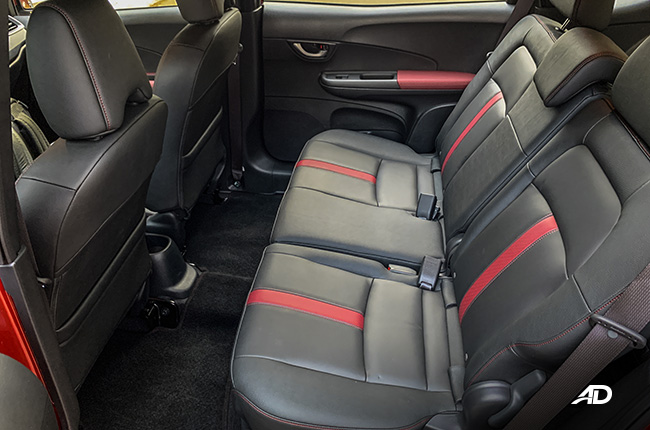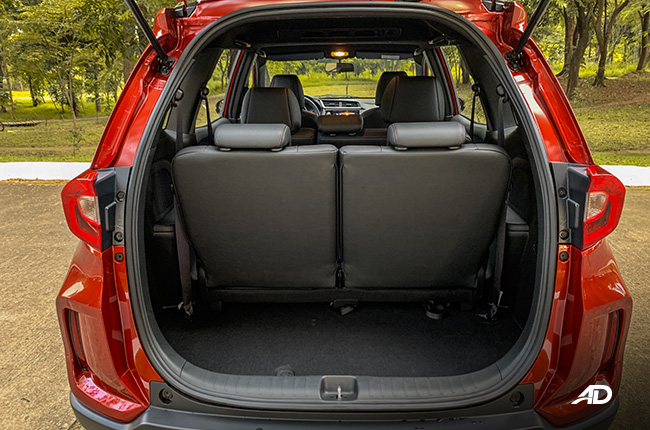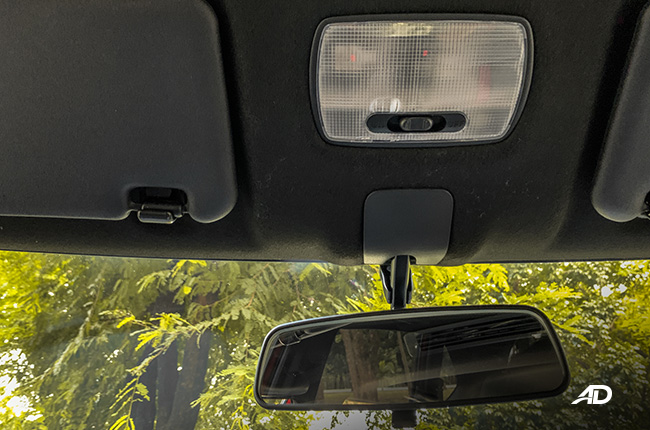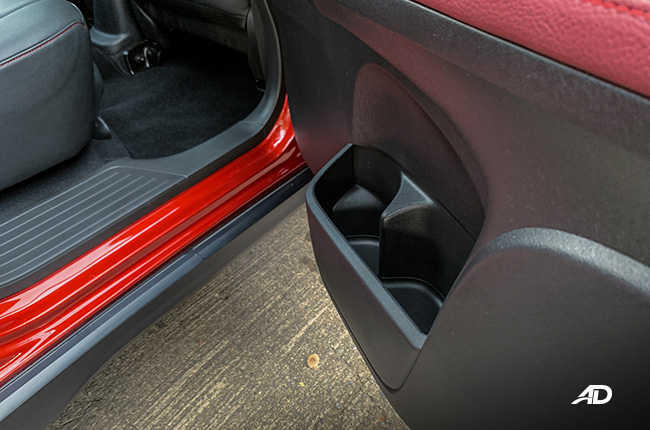
Contents
For the past three years, we have been writing about Filipinos loving seven-seaters. That isn’t changing in the foreseeable future because let’s face it, for us Pinoys, more people, more fun.
The Honda BR-V is among those who started a new age of vehicle type – an SUV-looking crossover that has the cabin specifications of an MPV. Confusing? We agree. In fact, we are having a hard time classifying these vehicles but one thing’s for sure, these cars are popular with the local car buyers.
This year, Honda Cars Philippines gave the BR-V a mid-cycle refresh in order to keep up with the newer names in its young segment. But, how far did the improvements go? Here’s a full 2019 Honda BR-V review.
Engine Output (HP), Acceleration, Transmission, Handling 4.0/5
Exterior & Interior Design, Quality, Fit and Finish, Ergonomics 4.0/5
Cabin Comfort, Suspension, NVH Insulation 4.0/5
Convenience Technologies, Active and Passive Safety Features 3.5/5
Amount of the vehicle you get for the price, Fuel Efficiency 3.5/5
- Ride comfort has improved a lot from before.
- The most powerful in its class.
- Flexible seating configuration.
- CVT's rubber band effect.
- Lack of seat height adjuster and telescopic adjustment.
Exterior
Additional slat on the bigger grille, a new fog lamp casing, shorter C-shaped creases on the bumper, redesigned 16-inch alloys, and a revamped rear end that mimics the front – those are the only changes you should expect in the facelifted Honda BR-V. They’re not a handful but I think they’re enough to tell you that this is indeed a new BR-V. After all, I did tell you that this is just a refresh, right?
With all the changes employed and the ominous under claddings, the BR-V retains its SUV styling, which is part of its appeal anyway. It also inherits the 201mm ground clearance and the projector halogens. I'm not really sure of the latter as this version of the BR-V could have been better if it were given LED headlights, just like one of its rivals, the Toyota Rush. Nevertheless, the new fascia, which is highlighted by the LED daytime running lights, does kind of make the BR-V look like the CR-V, doesn’t it?
Interior
This is where the BR-V pretty much improved a lot on, at least in terms of aesthetic appeal. The borderline-boring dark cabin of its predecessor came alive in the refreshed model, primarily because of the screaming red accents. I also like the type of leather used this time around, which is softer than before. The changes are few, really, but the feeling is entirely different. Honda also keeps the several storage spaces inside the BR-V – something that all seven-seaters should have.
With that said, the BR-V still needs a little more refinement in the cabin. The unpadded door cards aren’t the best place to have your elbows sit on, plus the lack of seat height adjuster for the driver can really be a problem for both short individuals and those who want to sit low (like myself).
Then again, that baseball-looking gear lever might sound like a cheap thrill but I seriously dig it.
Comfort
On my review of the old BR-V, one of my gripes was its rigid suspension. That’s a thing of the past now as the refreshed 2019 BR-V has a significantly improved ride than before. The suspension is still stiff but the dampening is way better than before. In my First Drive review of the BR-V, I rode at the second row for hours without any complaints – and that was through the crest and troughs of Bataan. NVH insulation has greatly improved from before, as well.
The BR-V’s cabin space is the same as before, made liveable by an open cabin feeling, slidable second row, and reclining third-row backrests. But just like any vehicle at this segment, the last row is much better for kids and small adults in order to ferry seven people comfortably.
Trunk space, on the other hand, is decent even with the third-row seats erects. A two-fold child stroller could fit the measly default cargo area – surprisingly better than some midsize 7-seater crossovers I’ve reviewed before.
Technology
The BR-V’s tech toys aren’t really something to rave about but they’re pretty much on par with its price point. Expect a legible instrument cluster with onboard computer, plus other power-assisted features that you should come with at this price. The lack of tone-touch lane changer isn’t a pleasant surprise, though.
What’s new in the refreshed BR-V is the inclusion of a reverse camera with guidelines across the range. Even better, the top-spec V variant that I’m testing here comes with a third-party Kenwood touchscreen infotainment system, equipped with Apple CarPlay and Android Auto. In this age of smartphones, that’s a huge plus for me – you’ll just have to live with the kinks of third-party units, such as the separate USB ports from inside the glove compartment.
Safety

The BR-V isn’t stark when it comes to safety features, especially when compared to its aforementioned rival, but it isn’t lacking as well. Standard across the range are driver and passenger airbags, stability control, ABS with EBD, hill start assist, ISOFIX child seat anchors, and 3-point seatbelts for all occupants. The driver and front passenger also get audible seatbelt reminders.
Driving & Handling
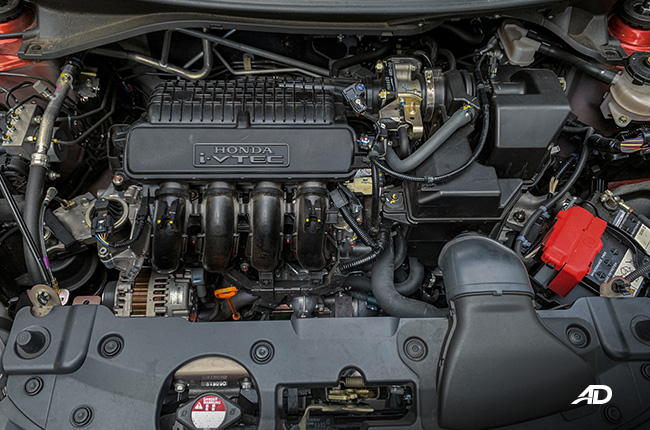
The 2019 Honda BR-V retains the heart of its predecessor, the 1.5-liter gasoline engine that’s good for 118 hp and 145 Nm of torque. With that said, it still is the most powerful in its class. It’s also the one with the latest transmission technology, the Honda Earth Dreams CVT, sending all those power to the front wheels.
As such, the BR-V drove the same; there’s satisfying pull most of the time (except when fully-loaded) and the CVT employed a polarizing rubber-band effect when trying to increase speeds. Handling was likewise similar to what it was with the old BR-V. Stints on winding roads were composed and manageable, while body roll was, of course, present.
But then again, I have to say this – the Honda BR-V still drove better than its rivals such as the Mitsubishi Xpander and Toyota Rush because frankly, numbers matter at this point.
Fuel Consumption

Surprisingly, the BR-V’s fuel efficiency numbers were a tad lower than what I got before. A 30-minute drive on the highway while trying to keep it at 90 km/h gave back 21 km/L. Provincial drives at an average speed of 60 km/h registered 14.1 km/L.
Meanwhile, city drives were thriftier this time around as I was able to get 8.8 km/L after an hour of crawling on a traffic-laden EDSA.
Verdict

The Honda BR-V started a revolution within the Philippine automotive market, giving buyers of 7-seat vehicles a better-looking option and a ticket into the SUV segment without breaking the bank. This refreshed version is a solid effort from Honda to reinstate its position as a sought-after, entry-level SUV – and a commendable one at that. With all things considered, the facelifted version of the BR-V can stand bravely against its newer rivals.
Even better, the improved Honda crossover/SUV/MPV still stands at the middle ground when it comes to pricing: P1,155,000 for the top-spec BR-V V variant. Kudos to Honda for that.
Exterior Photo Gallery
Interior Photo Gallery
Specifications
Engine
1.5 LFuel Type
GasolinePerformance
118 hp @ 6,600 rpmTransmission
CVT-
Summary
-
Name Honda BR-V 1.5 V CVT Body Type Crossover Price ₱1,168,000 Transmission Category CVT -
Engine
-
Engine Size 1.5 L Displacement 1,497 cc Number of Cylinders 4 Number of Valves 16 Transmission Type Continuously Variable Transmission (CVT) -
Performance
-
Drivetrain Front-Wheel Drive Max Output (hp) 118 hp @ 6,600 rpm Max Torque (nm) 145 Nm @ 4,600 rpm -
Economy & Environment
-
Fuel Type Gasoline Emissions Standard n/a Fuel Capacity 42.0 L *Combined Fuel Consumption 14.3 km/L *brand manufacturer claim
-
Dimensions
-
Length 4,456 mm Width 1,735 mm Height 1,677 mm Wheelbase 2,662 mm Turning Circle 11 m Ground Clearance 201 mm Trunk Capacity 223 L Number of Doors 5 Number of Seats 7 -
Safety & Security
-
Driver's Airbag 1 Front Passenger's Airbag 1 Side Airbag Curtain Airbag Knee Airbag Auto Brake System Electronic Brake Distribution Anti-lock Brake System (ABS) with Electronic Brake Force Distribution
Immobilizer Security Alarm Stability Control Electronic Door Locks Speed Sensing Door Locks ISOFIX Lane Departure Warning System Blind-Spot Detection System -
Features
-
Cruise Control Front Parking Sensors Rear Parking Sensors Leather Upholstery Push Start Button Wheel Size 16 in Wheels Metal Type Alloy Airconditioning System Automatic Climate Control with Rear Independent Controls Entertainment System 7-inch Touchscreen Display Audio with, Apple CarPlay/Android Auto, Bluetooth, and USB via 4 speakers Connectivity Bluetooth, USB, Apple CarPlay/Android Auto Navigation Ready Warranty 3 Years (100,000 km) Keyless Entry Roof Rack Sunroof Electric Adjustable Seats Power Steering Power Windows Power Outlet Steering Wheel Audio Control -
Technology
-
Active Park Assist Hill Start Assist AWD Modes n/a Tire Pressure Monitoring Heads-up Display Power Liftgate Start-stop System
Colors
Latest Review
-
2025 BYD Seal 5 DM-i Premium Review / Review
We test-drove the BYD Seal 5 DM-i, and its features and affordable price make it a strong hybrid sedan contender.
4.2 / 5 -
Addictively excessive: The Ford Ranger Raptor Twin Turbo V6 / Review
The Ford Ranger Raptor Twin Turbo V6 is one crazy pickup truck. Wondering why? Just keep reading.
4.6 / 5 -
The Kia Carnival gives you more: More seats, more comfort, and more practicality / Review
The Kia Carnival is a three-row MPV designed for executives and families. It combines comfort, technology, and practicality, making it a strong choice for those looking for a premium people...
4.2 / 5
Popular Articles
-
Cheapest cars under P700,000 in the Philippines
Jerome Tresvalles · Sep 02, 2024
-
First car or next car, the Ford EcoSport is a tough package to beat
Jun 18, 2021
-
Car Maintenance checklist and guide – here’s everything you need to know
Earl Lee · Jan 12, 2021
-
Most fuel efficient family cars in the Philippines
Bryan Aaron Rivera · Nov 27, 2020
-
2021 Geely Okavango — Everything you need to know
Joey Deriquito · Nov 19, 2020
-
Family cars in the Philippines with the biggest trunks
Sep 20, 2023
-
Head to head: Toyota Rush vs. Suzuki XL7
Joey Deriquito · Oct 28, 2020
-
Why oil changes are important for your car
Earl Lee · Nov 10, 2020
-
2021 Kia Stonic — What you need to know about it
Joey Deriquito · Oct 16, 2020
-
Top 7 tips for buying a used car in the Philippines
Joey Deriquito · Nov 26, 2020





